

Istanbul

city overview
Istanbul, formerly Constantinople, city in northwestern Turkey, the only city in the world that sits astride two continentsEurope and Asia. Istanbul is the largest city in Turkey and the countrys chief commercial and cultural center. With the finest natural harbor in the region, it is also an important trade hub. The city is the capital of Istanbul Province, which is bounded on the north by the Black Sea, on the south and southwest by the Sea of Marmara, on the east by Kocaeli Province, and on the west by Tekirdağ Province. The Bosporous, a narrow strait that links the Black Sea and the Sea of Marmara, separates Istanbuls European and Asian sections.
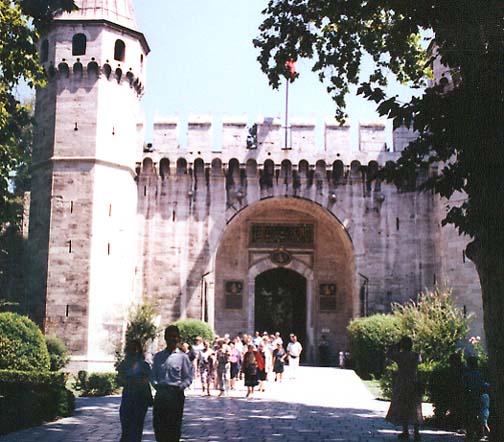
entrance to the great palace complex of Topkapı Sarayı
Istanbul was founded in the 7th century BC as Byzantium. In the 4th century AD it was renamed Constantinople by Roman emperor Constantine the Great. The city served as the capital of the Byzantine Empire until it was captured by the Ottomans in the 15th century and made the capital of the Ottoman Empire. The Ottomans called the city Istanbul for centuries, but it was not until 1930, seven years after Turkey gained independence, that İstanbul became its official name. According to some sources, the name İstanbul is derived from the Greek term stin poli, meaning to the city or in the city.
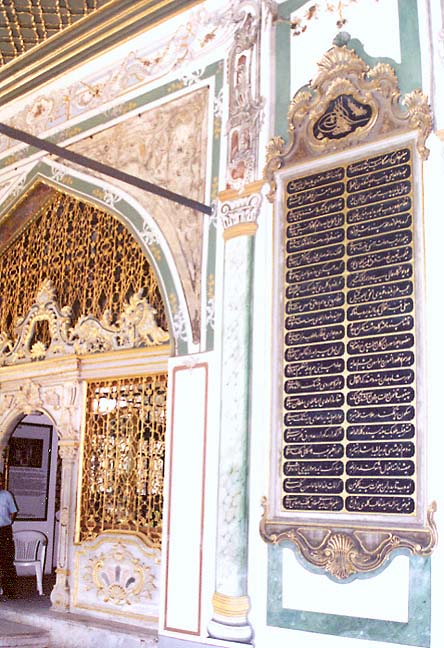
the palace
Stambul is dominated by the great palace complex of Topkapı Sarayı, begun by Sultan Muhammad II in 1459 and added to by later Ottoman sultans. The palace is now Turkeys most popular tourist attraction. Near Topkapı is Hagia Sophia (Ayasofya in Turkish), built in the 6th century as an Orthodox Christian church and later converted into a mosque. Farther west is Suleimaniye Mosque (built between 1550 and 1557), designed by the well-known Ottoman architect Sinan for Sultan Suleiman I. The Suleimaniye Mosque is widely considered İstanbuls finest Ottoman monument.
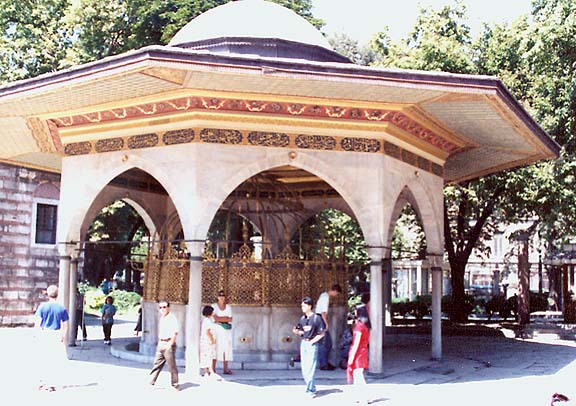
fountain for cleansing before prayers
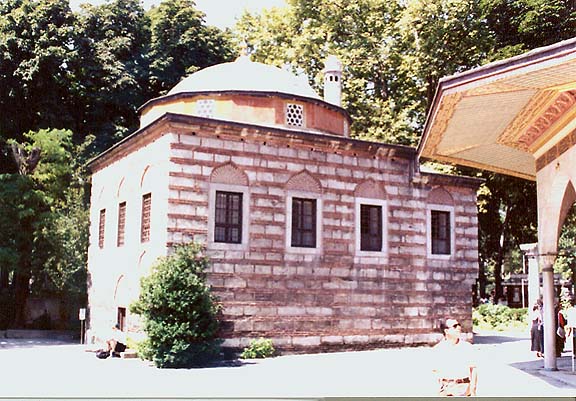
the nearby mosque
Other famous mosques in Stambul include the Blue Mosque of Sultan Ahmed I (built
between 1609 and 1616), named for its blue-painted tile interior; the Mosque of
Rustem Pasha (completed in 1561), famed for its Turkish tile work; and the Yeni
Cami (New Mosque, 1597-1663). Other sites in Stambul include the famed
KapalıÇarºı (a covered bazaar with hundreds of shops) and the Kariye Mosque
(formerly the Church of Saint Savior in Chora), which contains some of the
worlds finest Byzantine mosaics and frescoes. Northwest of the city walls,
along the Golden Horn, is the sacred Mosque of Eyüp Ensari (1458), which
contains the burial site of Ensari, a leader of the Arab siege of Constantinople
(674-678).
Text from Microsoft Encarta
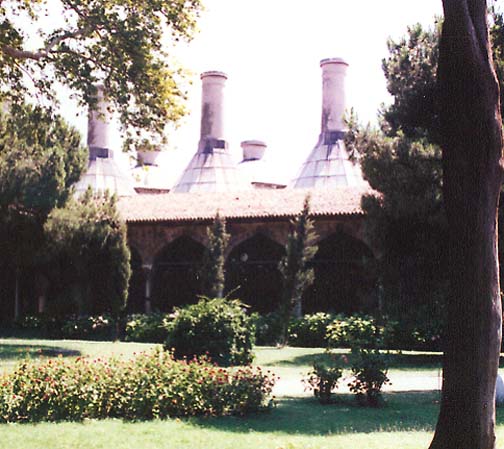
the kitchen vents
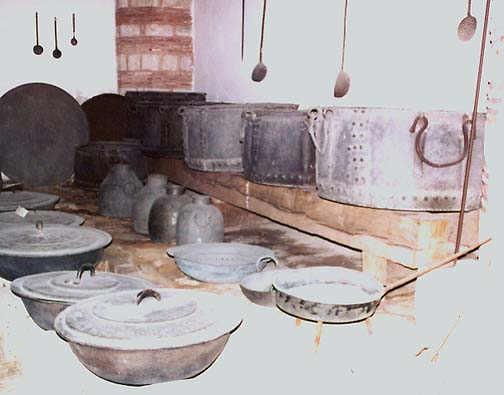
the kitchen

a large copper vat
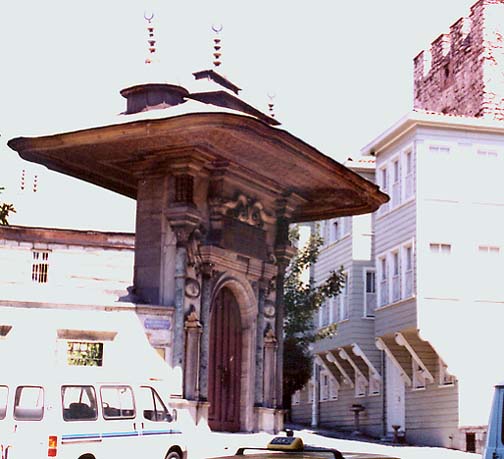
gateway to the complex
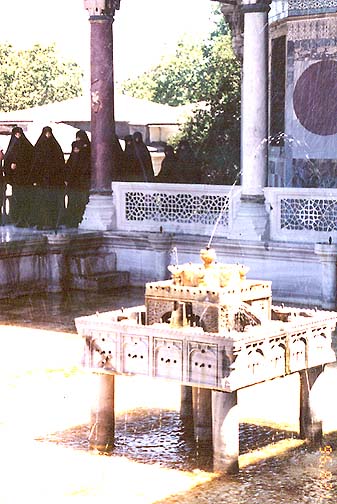
a garden fountain inside
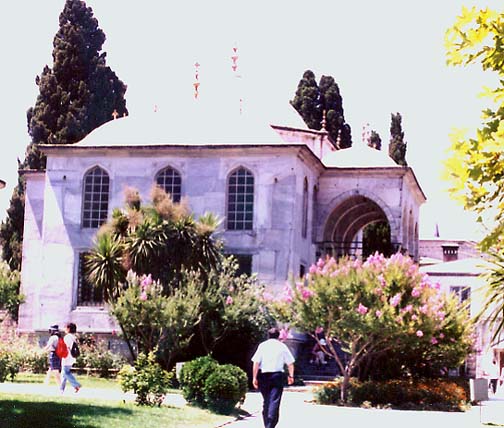
a mosque
![]()
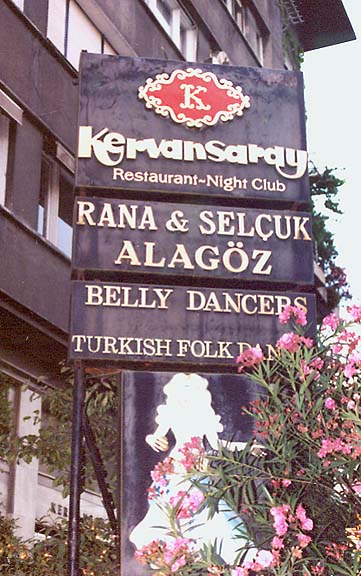
a tourist diversion
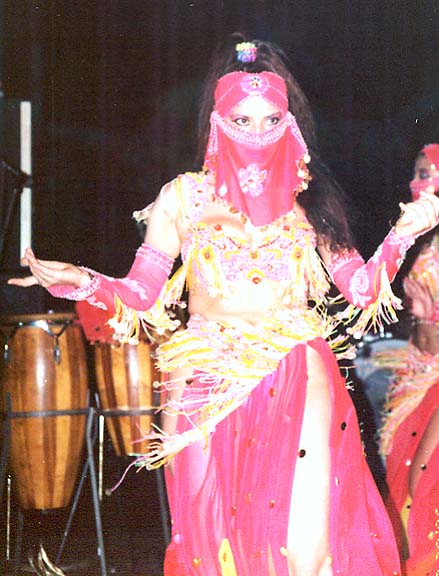
veiled dancer

belly dancer
![]()
Return to Turkey in Europe page
![]()